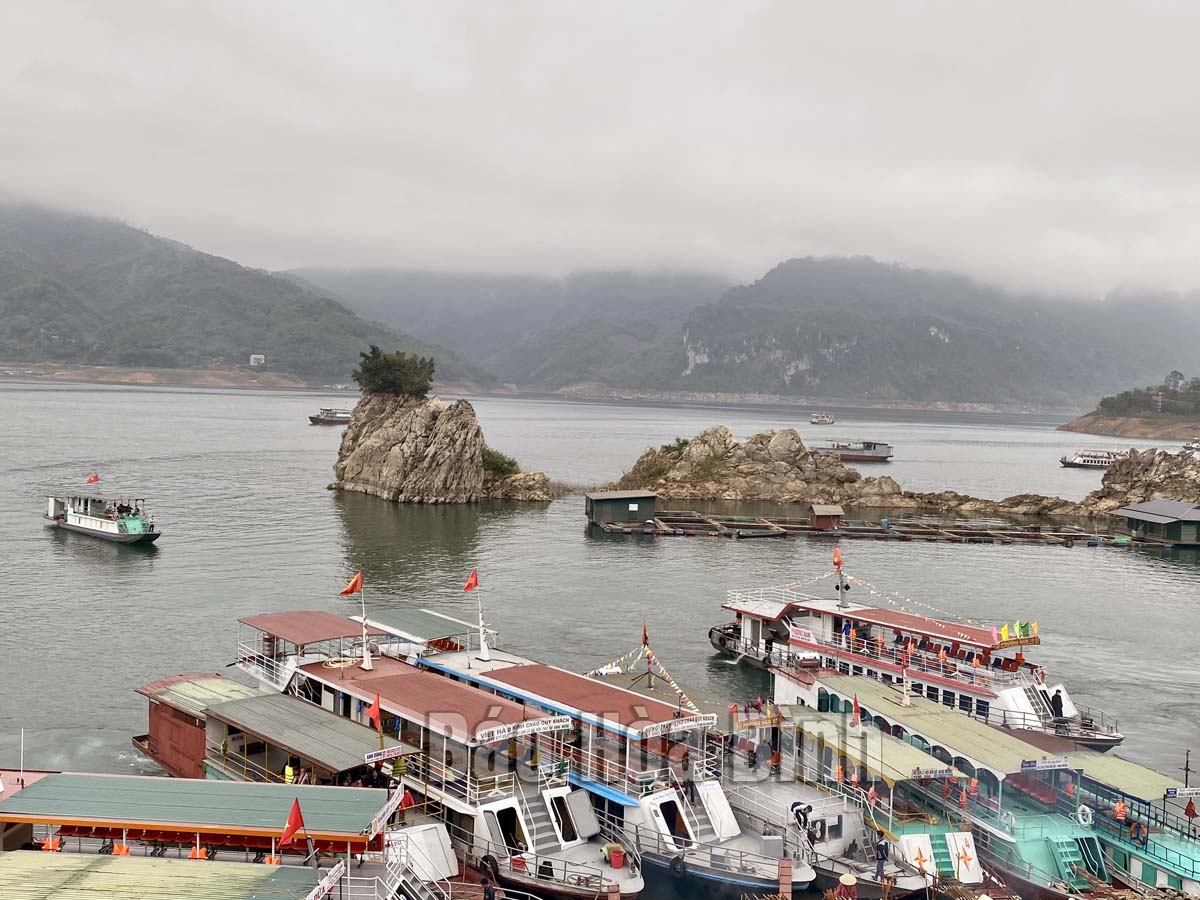
(HBO) - The tourism industry is thriving after 61 years and it has contributed tremendously to the economic growth of the locality, especially since the province's re-establishment.

The beautiful scenery at Ngoi Hoa Bay in Suoi Hoa commune (Tan Lac
district) is part of the potential for the development of Hoa Binh Lake Tourist
Area.
Mai Chau, a tourism hotspot of Hoa Binh province
has been chosen by many tourists for not only one but many of their trips. Here,
tourists can experience unforgettable culture, ethnic cuisine, and peaceful
feeling.
In the 2016-2020 period, over 334,500 tourists
visited Mai Chau each year, generating total revenue of 147.4 billion VND/year.
Here, community-based tourism has developed in event remote communes.
Ha Thi Hoa, head of the Culture and Sports
Department of Mai Chau district, said that Mai Chau has been focusing on
building the image of an "attractive - friendly - safe" tourist
destination while intensifying tourism promotion activities.
Hoa Binh Lake, dubbed the "Ha Long Bay on
the mountain", has proved its attraction to tourists. Local authority is
working to turn Hoa Binh Lake tourism site into a national tourism area.
Accordingly, investment is made to build tourism infrastructure, and the Hoa
Binh Lake tourism site is promoted on the media, in tandem with setting up
linkages in tourism activities with other Northern provinces and Hanoi capital.
It can be said that the Hoa Binh Lake tourism
site, which has initially achieved some conditions to become a national tourism
site and Mai Chau district are the highlights of the tourism industry of Hoa
Binh province.
In recent years, the number of tourists and
total revenue from tourism in Hoa Binh province has grown at an average rate of
over 10 percent per year. The province has attracted over 4.1 trillion VND
worth of investment in tourism, creating jobs for over 14,000 labourers,
including about 4,000 labourers with professional training.
Bui Thi Niem, Director of the Department of
Culture, Sports and Tourism, said that in order to optimise local advantages
and turn tourism into a spearhead economic sector of the province, Hoa Binh
will focus on sustainable tourism development, in association with preserving
and promoting ethnic cultural identities, landscapes and biodiversity, as
well as with the building of new-style rural areas.
A diverse chain of eco-tourism and resort destinations concentrated in Hoa Binh city and the districts of Tan Lac, Da Bac, and Luong Son… Along with the launch of several key high-quality resort tourism projects, these developments have reshaped the landscape and enhanced the appeal of Hoa Binh as a travel destination.
Boasting diverse terrain, a mild climate, and rich natural resources, Cao Phong district is increasingly asserting its place on Vietnam’s tourism map, attracting both domestic and foreign visitors. The district is renowned for its stunning landscapes, majestic mountains, a crystal-clear hydropower lake, and the unique cultural identity of local ethnic groups.
With its pristine landscapes, unique cultural heritage of Muong ethnic minority, and an expanding range of visitor experiences, Tan Lac district of Hoa Binh has fast become a captivating destination for both domestic and international tourists.
Until now, Sung village in Cao Son commune, Da Bac district remains the only Dao ethnic community in Hoa Binh province to develop a community-based tourism model. Beyond its untouched natural landscapes, cultural identity serves as the cornerstone attraction for visitors.
Alongside the diverse cultural identities of the Kinh, Muong, Tay, Thai, Dao, and Mong ethnic people, Hoa Binh province is also renowned as the "capital" of the northwestern Vietnamese cuisine, offering unique and distinctive dishes. At festivals, during Lunar New Year (Tet), or on significant family or community occasions, special dishes are prepared, leaving a lasting impression on visitors.
A Phong Linh (Yellow Tabebuia) flower garden in Thang village, Thach Yen commune, Cao Phong district is currently in full bloom, drawing a large number of visitors.



